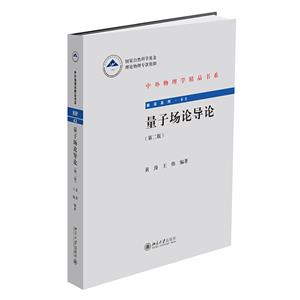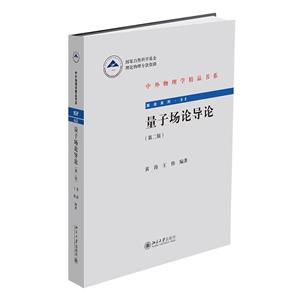
作者:(美)斯雷德尼奇
页数:664
出版社:世界图书出版公司北京公司
出版日期:2010
ISBN:9787510005749
电子书格式:pdf/epub/txt
内容简介
本书介绍量子场论方法,读者只需要掌握基本的量子力学和狭义相对论的相关知识就能读懂。作者从简单事例引出现象背后的深刻物理概念,利于理解;从不同历史时期的经典成果讲到现代议题,便于掌握。
作者简介
Mark Srednicki,美国加州大学圣巴巴拉分校物理学教授。1977年在康奈尔大学获得学士学位,1980年在斯坦福大学获得博士学位。曾在普林斯顿大学和欧洲核子研究中心(CERN)做博士后。
本书特色
★”This accessible and conceptually structured introduction to quantum field theory will be of value not only to beginning students but also to practicing physicists interested in learning or reviewing specific topics. The book is organized in a modular fashion, which makes it easy to extract the basic information relevant to the reader’s area(s) of interest. The material is presented in an intuitively clear and informal style. Foundational topics such as path integrals and Lorentz representations are included early in the exposition, as appropriate for a modern course; later material includes a detailed description of the Standard Model and other advanced topics such as instantons, supersymmetry, and unification, which are essential knowledge for working particle physicists, but which are not treated in most other field theory texts.”
——Washington Taylor, Massachusetts Institute of Technology
★”Over the years I have used parts of Srednicki’s book to teach field theory to physics graduate students not specializing in particle physics. This is a vast subject, with many outstanding textbooks. Among these, Srednicki’s stands out for its pedagogy. The subject is built logically, rather than historically. The exposition walks the line between getting the idea across and not shying away from a serious calculation. Path integrals enter early, and renormalization theory is pursued from the very start, with the excellent choice of φ3 in six dimensions as the training workhorse. By the end of the course the student should understand both beta functions and the Standard Model, and be able to carry through a calculation when a perturbative calculation is called for.”
——Predrag Cvitanovic, Georgia Institute of Technology
目录
读者对象:理论物理、凝聚态物理和场论等专业的高年级本科生、研究生和相关专业的科研人员。















